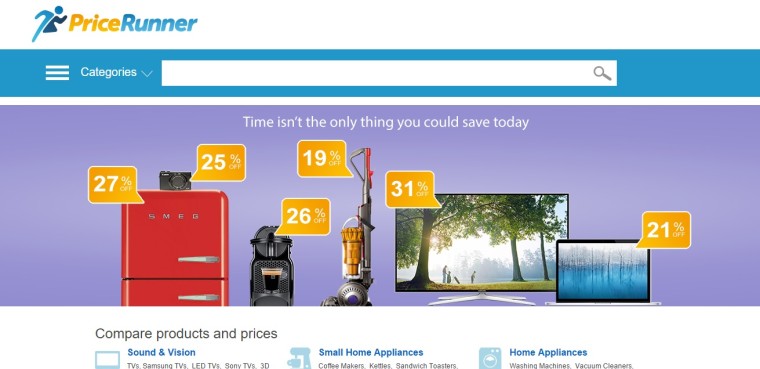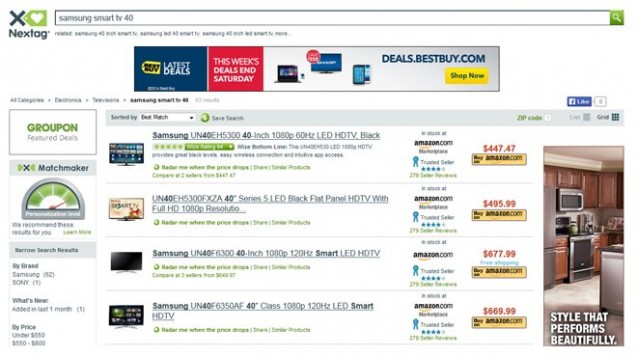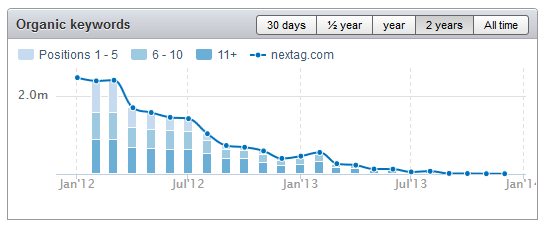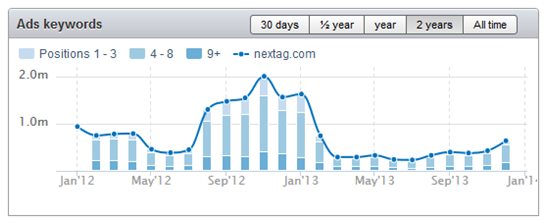Consumer Futures research shows over half (52%) of users use comparison search engines (CSEs) on a regular basis for their on-line shopping and 80% use it to find better prices for the goods.
Whether you want to deal with bargain hunters or not, over half of your potential buyers are going to use price comparison sites. Which means if you don’t take measures to compete, your smart competitor will get your customers.
Comparison shopping engines are a great multiplier – sending your data to thousands of sites worldwide. With such coverage, CSEs make it possible for your store to be seen anywhere, making these engines a powerful channel with an undeniable ROI.
Yet, many marketers still underestimate the power of this channel. Our experience and analysis prove how important CSEs are for any e-commerce site marketing strategy.
There’s a lot to love about CSEs. They increase your store’s online visibility, attract new customers and, best of all, boost your sales.
Besides, number of facts about CSEs users proves that targeting this audience is economically feasible:
- 65 % of visitors CSEs spend 15 + minutes studying products and prices ;
- visitors who came to CSEs shop twice as often (in other words conversion is twice as high);
- average conversion rate of traffic from CSEs is 2,56%;
- $ 3,7 is an average ROI on every dollar
Let’s take a closer look what price comparison sites have to offer marketers, how to start using them and what to look for to make the best use of every dollar spent.
Price Comparison Sites For US Market
According to data from Volusion.com, five CSEs occupy about 80% of the market:
- Google (Product Listing Ads, PLA)
- Pricegrabber
- NextTag
- Shopping.com
- Amazon Product Ads
Businesses have to pay to be featured at the majority of price comparison sites, but there are a few who do not charge registration fee or per click.
To Start Working With CSEs
To begin work with any of price comparison sites, you need to start with three steps:
- Register and get access to the advertiser’s account
- Upload product feed of the store to the system (ideally set automatic upload)
- Run a campaign
Free CSEs
1. DealOz.com
 Screenshot taken on the 24th of January 2014
Screenshot taken on the 24th of January 2014Price comparison site DealOZ was launched in 1999 with 1-2 million visitors a month. According to Alexa data, 80% of their traffic comes from the US.
Sources of Traffic
According to SEMRush, their site doesn’t get any organic traffic from the search engines, but it runs quite a big advertising campaign for their books category (their only category where sellers have to pay-per-click)
You can register here to start working with DealOz.
When the article was written, DealsOz was free for advertisers (except for the books CPC is $0.35). Here you can find information on cost per click.
Product Feed Specifications
The good news is that you don’t need to make a separate feed, as DealOz accepts all formats of key price comparison sites (Google txt, Google xml, Yahoo txt, Yahoo xml, Shopzilla (bizrate), Shopping.com, Nextag, Pricegrabber).
Mandatory fields are:
- sku – product code
- name – product name
- description – product description in plain text
- site_category – name of the product category (For example: home electronics > audio & video > video > dvd players)
- price – price of the product
- product_url – complete url of the product (с http://)
In most cases, these fields are mandatory for the rest of price comparison sites. Information can be uploaded in TXT files (gzip/zip – archive supported) or XML. Here you can read about detailed description of the specifications.
First, upload of the product feed. It will be reviewed (usually takes 1-3 days) and further uploads happen almost instantly.
2. TheFind
 Screenshot taken on the 24th of January 2014
Screenshot taken on the 24th of January 2014Launched in 2006, TheFind offers about 500 million products from 50o,000 on-line stores. The average number of visitors is 9-12 millions per month. According to Alexa, 57% of their traffic comes from the US.
Sources of Traffic
According to SEMRush, this site does not advertise, but it is ranked in Google’s USA top 20 for nearly 440,000 search queries. Most definitely substantial amount of traffic to TheFind comes from Google organic search. Also, TheFind has popular mobile application with barcode recognition feature and coupon support. The application was downloaded by 300,000-700,000 users from both Apple Store and Google Play. 35% of the traffic came from mobile in the first quarter of 2013 (source). Also, you can take a look at the infographic about TheFind.
You can register here to start working with TheFind.
Product Feed Specifications
Starting April 15, 2014 TheFind will only accept Google Product Listing Ads (xml or txt). So, if you haven’t worked with The Find yet, you should start uploads in standard Google PLA.
3. PriceRunner
 Screenshot taken September 2014
Screenshot taken September 2014If you are targeting European and UK audience, you can use another free price comparison site called PriceRunner. What’s cool is that PriceRunner accepts retailers even outside of EU.
PriceRunner was founded in 1999 and gets about up to 5 million shoppers per month.
Sources of Traffic
According to PriceRunner, their traffic sources are a mix of organic and paid with a great percentage coming from organic. They also have a partner network that serves as a large contributor of traffic to their retail clients.
Register here to start working with PriceRunner.
Product Feed Specifications
PriceRunner has a unique price feed format that is for the most part compatible with Google PLA (there are certain differences) in some fields. Read more information on the specs here.
Paid CSEs
4. Google Product Listing Ads (PLA)
The biggest source of traffic for price comparison sites comes from Google Product Listing Ads. The ads are displayed in two main formats:
1. In the results of regular Google search
 Screenshot taken on the 24th of January 2014
Screenshot taken on the 24th of January 20142. When using Google Shopping “vertical search”:
 Screenshot taken on the 24th of January 2014
Screenshot taken on the 24th of January 2014One way or another every Google user can see your products. Of course, provided that you use Google PLA.
Register in Google Merchant (to participate in the Google PLA)
Sources of Traffic
According to ComScore, Google had 67% of the market in the US in December 2013. Data from Google PLA is practically displayed for all product inquiries and according to all of the studies Google PLA generates most shopping traffic in the United States.
Product Feed Specifications
Google uses its own product feed standard, which is considered accepted industry standard. Here you can review specs details (supports txt and xml files with support for archiving). Good news for internet stores owners and agencies, Google Merchant supports different access levels and allows to manage multiple accounts centrally.
5. Pricegrabber
According to their media kit, 26 million unique users visit Pricegrabber monthly and their average income is $71,000.
Click here to register in Pricegrabber.
Sources of Traffic
Lately, Pricegrabber has been going through tough times and lost almost of its organic traffic. In January 2012 the site ranked in Google’s top 20 for 434,000 search queries, but now it ranks only for 4500.
 Screenshot taken on the 24th of January 2014
Screenshot taken on the 24th of January 2014Pricegrabber had to compensate the lack of organic traffic by Google advertising.
 Screenshot taken on the 24th of January 2014
Screenshot taken on the 24th of January 2014Nevertheless, Pricegrabber managed to grow its loyal customer base. Its mobile app is very popular.
According to Alexa data, 64% of their traffic comes from the US.
Cost per click in Pricegrabber varies from $0.35 in book category to $0.65-$1 in electronics. Here you can find detailed information about pay-per-click in various categories (if you want to visually highlight the listing using clickable logo add $0,1 per click)
Product Feed Specifications
Pricegrabber has own unique product feed format, go here for detailed information. Supports txt and cvs formats.
6. Nextag
 Screenshot taken on the 24th of January 2014
Screenshot taken on the 24th of January 2014Register here to start working with Nextag.
Nextag is one of the oldest price comparison sites and it was launched in 1999. According to their official information, more than 30 millions of users visit site monthly to shop. Alexa data shows Nextag is ahead of Pricegrabber, but overall site traffic is clearly decreasing:
 Screenshot taken on the 24th of January 2014
Screenshot taken on the 24th of January 2014Sources of Traffic
Just like Pricegrabber, Nextag lost its organic traffic and has to run massive advertising campaigns on Google. According to Alexa, US users generate 75% of the traffic (there are other regional versions for Australia, Canada, France, Germany, Italy, Japan, Spain)
 Screenshot taken on the 24th of January 2014
Screenshot taken on the 24th of January 2014 Screenshot taken on the 24th of January 2014
Screenshot taken on the 24th of January 2014Nextag has a mobile application (iOS, Android, Windows Phone) with a total of 1.5 millions downloads.
Cost per Click
Cost per click depends not only on the category, but also on the price of the product. For example, if you sell computer screens for less than $300, the price per click will be $0.65. If it costs more than $650 then the price per click will be $1.20. Sounds ridiculous, but its more profitable to sell cheaper products with Nextag. There is also 15% discount per click in high season.
Product Feed Specifications
Nextag has own format of the product feed upload, detailed description you can find here, and more info here.
7. Shopping.com
 Screenshot taken on the 24th of January 2014
Screenshot taken on the 24th of January 2014eBay purchased Shopping.com in 2005. Shopping.com attracts the same amount of traffic as Pricegrabber, which equals 20-25 million visitors per month.
Register to start working with eBay Commerce Network Merchant Center (including Shopping.com).
 Screenshot taken on the 24th of January 2014
Screenshot taken on the 24th of January 2014Sources of Traffic
Just like its competitors, Shopping.com is losing web traffic (mainly due to the drop in organic Google traffic), and compensating with Google AdWords. According to Alexa, only 30% of the traffic is generated by US visitors.
 Screenshot taken on the 24th of January 2014
Screenshot taken on the 24th of January 2014Cost per Click
Just like Nextag, Shopping.com uses dual system of click cost measurement (depending on the category and product price). Also prices are seasonally adjusted depending on the category (from 0% to 25% during sales season in the end of 2013). For example, a click in the category “TVs under $400” costs $0.69, over $400 costs $1.55.
Product Feed Specifications
eBay Commerce Network Merchant Center has its own product feed format. You can check the detailed explanation for the product feed specifications here. Data can be uploaded in cvs and xml files, and archiving is supported (feeds must be achieved if the file is larger than 100Mb)
Conclusion
Many CSEs have lost their organic traffic or are losing it, but online store owners should still consider including CSEs in their marketing mix. In 99% of cases you can set up automatic export of product feed, so data can be updated automatically. Free CSEs help you get free traffic, especially if automatic updates are set up.
We only reviewed the most popular price comparison engines, keep in mind that there are many other sites and platforms (Bing, Amazon Ads, Shopzilla, Become.com, and others).
Featured Image: Denys Prykhodov/Shutterstock.com





![[SEO, PPC & Attribution] Unlocking The Power Of Offline Marketing In A Digital World](https://www.searchenginejournal.com/wp-content/uploads/2025/03/sidebar1x-534.png)